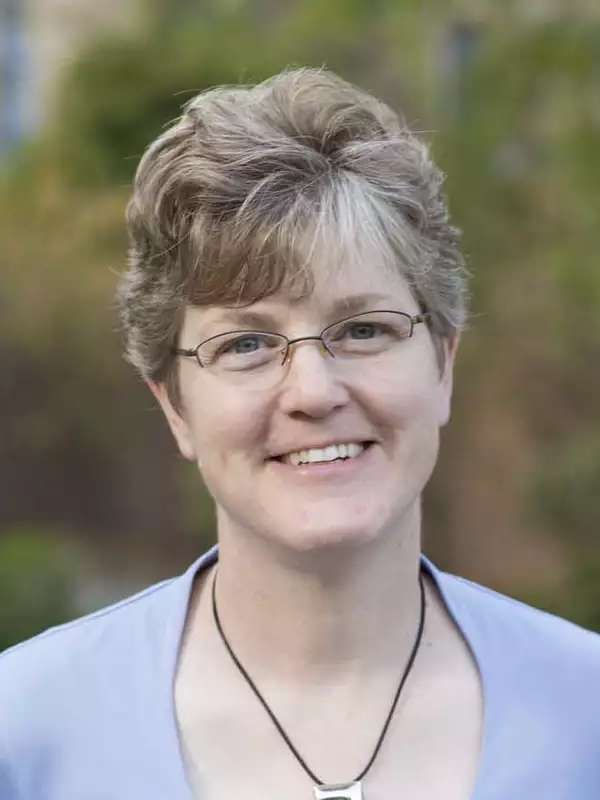
Ann Senghas
Department
Psychology
Office
Office Hours
Contact
CV
Ann Senghas, Professor of Psychology and Director of the Language Acquisition and Development Laboratory, joined the Barnard faculty in 1999. Her teaching includes courses in developmental psychology and language acquisition.
Before coming to Barnard, Professor Senghas held postdoctoral research fellowships at the Sign Language Research Center, the University of Rochester, and the Max Planck Institute for Psycholinguistics in the Netherlands.
Professor Senghas' current research examines the emergence of grammatical structure in a new sign language being created by a generation of deaf children and adolescents in Nicaragua. Each summer, Professor Senghas and her research group spend six weeks in Nicaragua, videotaping the signing of deaf children and adults, in order to document and analyze their continually changing language.
Professor Senghas studies the ways in which language learners and language users create ordered systems from disordered input and how this ability develops over the lifespan.
Professor Senghas' research has been supported by the National Institutes of Health. She has received a Frontiers of Science Fellow Award from the National Academies of Science and Engineering.
- B.A., Smith College
- Ph.D., Massachusetts Institute of Technology
- Language acquisition
- Cognitive development
- Language evolution
- Historical linguistics
- Sign Language
- Gesture
Pyers, J. E., A. Shusterman, A. Senghas, E. Spelke, and K. Emmorey (2010). Spatial language supports spatial cognition: Evidence from learners of an emerging sign language. Proceedings of the National Academy of Sciences (PNAS).
Senghas, A., and M. Coppola (2010). Getting to the point: How a simple gesture became a linguistic element in Nicaraguan signing. In D.J. Napoli and G. Mathur (Eds.), Deaf Around the World. Oxford University Press.
Coppola, M., and A. Senghas (2010). Deixis in an emerging sign language. In D. Brentari (Ed.), Sign Languages: A Cambridge Language Survey. Cambridge: Cambridge University Press (543-569).
Senghas, A., A. Özyürek, and S. Goldin-Meadow (2010). The evolution of segmentation and sequencing: Evidence from homesign and Nicaraguan Sign Language. In Evolang8: The Proceedings of the Eighth International Conference on the Evolution of Language.
Senghas, A. (2010). Reinventing the word. In B. Malt and P. Wolff (Eds.), Words and the Mind: How Words Capture Human Experience. Oxford University Press (16-28).
Pyers, J. and A. Senghas (2009). Language promotes false-belief understanding: Evidence from a new sign language. Psychological Science, 20:7, 805-812.
Pyers, J. E., and A. Senghas (2007). Reported action in Nicaraguan and American Sign Languages: Emerging versus established systems. In P. Perniss, R. Pfau, and M. Steinbach, (Eds.), Visible variation: Comparative studies on sign language structure. Berlin: Mouton de Gruyter.
Senghas, A., D. Roman, and S. Mavillapalli (2006). Simplemente Único: Lo que la Comunidad Sorda de Nicaragua le Puede Enseñar al Mundo [Simply Unique: What the Nicaraguan Deaf Community Can Teach the World]. London/Managua: Leonard Cheshire International.
Senghas, A. (2006). ¿De dónde surgió el Idioma de Señas de Nicaragua? [Where did Nicaraguan Sign Language come from?] In A. Senghas, D. Roman, and S. Mavillapalli (Eds.), Simplemente Único: Lo que la Comunidad Sorda de Nicaragua le Puede Enseñar al Mundo. London/Managua: Leonard Cheshire International.
Senghas, A. (2005). Language emergence: Clues from a new Bedouin sign language. Current Biology, 15:12, 463-465.
Senghas, R. J., A. Senghas, and J. E. Pyers (2005). The emergence of Nicaraguan Sign Language: Questions of development, acquisition, and evolution. In J. Langer, C. Milbrath, & S. T. Parker (Eds.), Biology and Knowledge revisited: From neurogenesis to psychogenesis. Mahwah, NJ: Lawrence Erlbaum Associates.
Senghas, A., A. Özyürek, and S. Kita (2005). Language emergence in vitro or in vivo? Response to comment on “Children creating core properties of language: evidence from an emerging sign language in Nicaragua” Science, 309: 5731, 56.
Senghas, A., S. Kita, and A. Özyürek (2004). Children creating core properties of language: evidence from an emerging sign language in Nicaragua. Science, 305: 5691, 1779-1782.
Senghas, A. (2003). Intergenerational influence and ontogenetic development in the emergence of spatial grammar in Nicaraguan Sign Language. Cognitive Development, 18, 511-531.
Senghas, A., A. Özyürek, and S. Kita (2002). Encoding motion events in an emerging sign language: From Nicaraguan gestures to Nicaraguan signs. In A. Baker, B. van den Bogaerde & O. Crasborn (Eds.) Cross-linguistic perspectives in sign language research. Selected papers from TISLR 2000. Hamburg: Signum Press.
Saffran, J. R., A. Senghas, and J. C. Trueswell (2001). The acquisition of language by children. Proceedings of the National Academy of Sciences (PNAS), 98: 23, 12874-12875.
Senghas, A., and M. Coppola (2001). Children creating language: How Nicaraguan Sign Language acquired a spatial grammar. Psychological Science, 12, 4: 323-328.